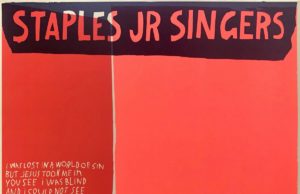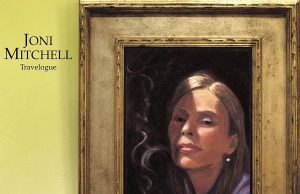 It has been a few days since I started down a rabbit hole surrounding the stellar first two solo albums by Graham Nash, and I’m still down there tunnelling. The biggest influence on those records — particularly the first one — was the end of Nash’s two-year relationship with Joni Mitchell, a union which ended in 1968, initially spawning the Crosby, Stills & Nash song Our House, and later the solo track Better Days. Compare:
It has been a few days since I started down a rabbit hole surrounding the stellar first two solo albums by Graham Nash, and I’m still down there tunnelling. The biggest influence on those records — particularly the first one — was the end of Nash’s two-year relationship with Joni Mitchell, a union which ended in 1968, initially spawning the Crosby, Stills & Nash song Our House, and later the solo track Better Days. Compare:
“Our house is a very, very, very fine house
With two cats in the yard
Life used to be so hard
Now everything is easy ’cause of you.”
with:
“When your love has moved away
You must face yourself and you must say
I remember better days
Don’t you cry ’cause she is gone
She is only moving on
Chasing mirrors through a haze.”
Poor Graham. But he was far from the only man to pine over Mitchell. I’ve dedicated an entire playlist to songs written about her:
Joni — born Roberta Joan Anderson — was married and divorced twice. The only child she had, she gave up for adoption because she was 21 years old and the father took off, leaving her alone in a Calgary attic when she was three months pregnant. On that playlist above, you’ll notice three of the four members of Crosby, Stills, Nash & Young penned songs about her. The only one who didn’t was Stephen Stills. Neither he nor Neil Young had a relationship with Joni that I’m aware of.
Anyway, I thought I’d compile names of some of the famous musicians who she and others did pair up with because I find it incredibly fascinating, and kind of sweet how people — especially before online dating — often find love at the workplace. This is really no different.
Joni Mitchell
She had famous relationships with musicians including Leonard Cohen, David Crosby, James Taylor, Jackson Browne, John Guerin, Jaco Pastorius, Don Alias and Larry Klein in addition to Nash. She wrote the masterpiece A Case Of You (from Blue) and Rainy Night House (from Ladies Of The Canyon) about Cohen. She wrote the sweet The Dawntreader (from Song For A Seagull) for Crosby during happier times — and The Song About The Midway (from Clouds) after she discovered his infidelities. She unveiled it to him at a party — in front of everyone. A breakup set to music.
I’ve already detailed the stuff Nash wrote about Joni, but her material about him is even more iconic. The beautiful River from 1972’s Blue is about their breakup:
“I’m so hard to handle
I’m selfish and I’m sad
Now I’ve gone and lost the best baby that I ever had.”
She also wrote Willy (from Clouds) as a direct response to Our House. Two other songs on Blue were written for her new beau Taylor — All I Want and the title track. Sweet baby James was struggling with a heroin addiction at the time, and that’s what Cold Blue Steel And Sweet Fire (from For The Roses) is about. From the same album, See You Sometime is also about Taylor — specifically, missing him.
Mitchell is believed to have written the 1994 track Not To Blame about Browne. It details domestic violence experienced by actress Daryl Hannah, which Browne has publicly denied. She also is said to have written Car On A Hill (from Court And Spark) about being stood up by him. It’s kind of weird and kind of endearing that Crosby and Nash (together) sang backup on albums by Taylor and Browne. Must have been something for Joni to hear songs by two of her exes, with backing vocals by two more of her exes.
Blue Motel Room (from Hejira) is about drummer Guerin and missing him in a similar way to how she was missing Taylor in See You Sometime:
“Will you still love me
When I call you up when I get back to town
I know that you’ve got all those pretty girls coming on
Hanging on your boom-boom-pachyderm
Will you tell those girls that you’ve got German measles
Honey, tell them you’ve got germs
I hope you’ll be thinking of me
Because I’ll be thinking of you.”
Cher
Always an icon, Cher (Cherilyn Sarkisian) has had numerous relationships with other musicians. She was just 16 when she married Sonny Bono. They were together for a decade, divorcing in 1975. During the split, she dated label boss David Geffen before starting a rocky four-year marriage to Greg Allman of The Allman Brothers Band from 1975 to 1979. When the shine came off that union — she famously filed to dissolve the marriage less than 10 days after the wedding, though the pair later reconciled — she started a three-year relationship with KISS bass player and notorious lothario Gene Simmons from 1977 to 1980.
Jennifer Lopez
The pop singer, actress and dancer has had high-profile relationships and marriages with icons from both within and outside the music industry. But the musical ones include Sean “Puff Daddy” Combs (1999-2001), Marc Anthony (2004-1011) and Drake (2016).
Rita Coolidge
After reading Drums & Demons: The Tragic Story of Jim Gordon, I know a thing or two about Rita Coolidge. Not long after she and Gordon co-wrote the famous coda of Eric Clapton’s Layla — for which she remains uncredited — she broke up with the troubled drummer and got together with singer-songwriter Kris Kristofferson in 1970. They were married from 1973 to 1980. She had met Gordon while singing with Delaney & Bonnie — with whom she wrote Superstar, which went on to be a hit for The Carpenters. She was also never credited for that.
Prior to her time with Delaney & Bonnie, Coolidge sang backup with Leon Russell (who wrote Delta Lady about her), Joe Cocker, (who had a hit with Delta Lady while she sang backup), Harry Chapin, Bob Dylan, Jimi Hendrix, Eric Clapton, Dave Mason… and both Nash and Stills. Yep, those two again. And guess what? She had relationships with both of them — dumping Stills for Nash, which ended up being one of the events which broke up CSNY in 1970. Or at least sent them off to their corners to produce four gold-certified solo albums. Crosby’s one (If Only I Could Remember My Name) contains the track Cowboy Movie, which is an account of the ups and downs of Crosby Stills Nash & Young. The “sweet little Indian girl” in the lyric is Coolidge, even though she’s called Raven in the song. Also: During Cocker’s Mad Dogs & Englishmen tour, Coolidge got involved with both Cocker and Russell.
Christine McVie
Christine Perfect was a vocalist and pianist in the blues band Chicken Shack when she married Fleetwood Mac bassist John McVie in 1969. She liked the Mac, and even played piano as a session musician on a handful of tracks on the band’s second album Mr. Wonderful. She cut a self-titled solo album and then joined Fleetwood Mac when founder Peter Green departed in 1970. She and McVie divorced in 1977 at the end of the Rumours tour. Perhaps having to perform her song about having an affair with the band’s lighting guy (You Make Loving Fun) was too much to handle.
From there, McVie began a relationship with Beach Boys drummer Dennis Wilson from 1979 to 1982. She co-wrote the hit Hold Me and Only Over You (both from Mirage) about their union. Wilson died in late December 1983 after drinking all day and then diving off his yacht, moored at Marina Del Rey, in an effort to recover his ex-wife’s belongings, which had been thrown overboard three days earlier. McVie married keyboardist and songwriter Eddy Quintela in 1986. The pair collaborated on a number of songs on Fleetwood Mac’s comeback album Tango In The Night — including the hit Little Lies. They split in 2003.
Janis Joplin
One of the focal points of the San Francisco scene during her short career, Janis Joplin dated Joe McDonald of Country Joe & The Fish for a time in 1967 before he broke up with her. She asked him to write a song for her — which he did. You’ll find Janis on his best-selling album I Feel Like I’m Fixin To Die. And then there’s a pile of rumoured relationships with Kris Kristofferson (who penned her hit Me And Bobby McGee), Robert Plant, Janis Ian, Ron “Pigpen” McKernan of The Grateful Dead, Fred “Sonic” Smith of MC5, and Big Brother & the Holding Company guitarist James Gurley. Leonard Cohen detailed a sexual encounter he had with Joplin in N.Y.C. in his song Chelsea Hotel #2, from 1974’s New Skin For The Old Ceremony.
Nico
The chanteuse of The Velvet Underground decided not to have the child she and Rolling Stones guitarist Brian Jones conceived during their three-month affair in 1965. Following this, she had relationships with three members of The Velvet Underground — guitarist Sterling Morrison, multi-instrumentalist John Cale and frontman Lou Reed. She was a featured vocalist on the famous Andy Warhol-produced banana debut album by the band. One of the songs she sang was the appropo Femme Fatale, penned by Reed about Edie Sedwick, at Warhol’s request. Cale was more of a friend and collaborator — producing and contributing to her solo albums.
Born Christa Päffgen, Nico was a tall, blonde German model whose appearance and presence turned many men and women into helpless suitors — some of them successful in that aim, others not so much. Among them were jazz trumpeter Chet Baker, Jim Morrison, Cohen and Browne, who penned and played on some of the songs on her 1967 solo album Chelsea Girl. Among those was her signature song These Days. Her transition to singing from modelling was partially inspired by a brief fling with Bob Dylan, who reportedly wasn’t a fan of her deep, European, vowel-laden vocals.
In the late ’60s, she began a brief union with a young Iggy Pop and even moved in with him in Michigan. There was an even more brief series of encounters with Hendrix after seeing him perform at the Monterey Pop Festival. I don’t believe they were ever an item, but Nico had involvement with Kevin Ayers, the charismatic English singer-songwriter formerly of Soft Machine. They formed a curious sort-of supergroup with Mike Oldfield, Brian Eno and Cale. Ayers was a cad. The day before they recorded their June 1, 1974 album, Cale’s wife Cindy Wells was seduced by Ayers, prompting Cale to write the song Guts. The photo of the group on the cover of the album — taken the day after the adultery accusation/admittal — shows Cale glaring at a smiling Ayers. #RockAndRoll
Chrissie Hynde
The Pretenders founder features prominently in the TV series Pistol, based on Sex Pistols guitarist Steve Jones’ memoir. She moved to London from the States in 1973 and dated music journalist Nick Kent, through whom she briefly worked as a writer at New Musical Express. Hynde broke up with Kent and hooked up with the bass player in her band The Frenchies, until she was forced to move back to the States.
When she returned to the U.K. in 1976, she met members of The Sex Pistols after she got a job at Malcolm McLaren and Vivienne Westwood’s King’s Road clothing store Sex. McLaren would eventually become the Pistols’ manager. Hynde actually tried unsuccessfully to convince both Jones and vocalist Johnny Rotten to marry her so she could stay in the U.K. Bassist Sid Vicious agreed to step in for Rotten and the pair headed for the registry office — only to find it closed for a bank holiday. They were unable to come back the next day because Vicious was already due in court on another matter.
The Pretenders were formed in 1978 and cut their successful, brilliant self-titled debut album in 1979. That album contains a cover of The Kinks’ Stop Your Sobbing, which would be the band’s first single — Hynde had been a fan of the band for years. The following year, she met Kinks frontman Ray Davies at a New York club and the pair started dating. The Pretenders covered another Kinks song, I Go To Sleep, on their second album in 1981. In 1982, they planned to marry — but were turned away by the registry office because they were arguing. They had a daughter together the following year but the rocky relationship was doomed and ended not long afterwards. By 1984, Hynde married Simple Minds lead singer Jim Kerr, with whom she had another daughter in 1985. The pair divorced in 1990.
Stevie Nicks
The Fleetwood Mac vocalist met Lindsey Buckingham when she was in her final year of high school. She joined his band Fritz as a backing vocalist in 1967 and they became a duo in 1972 when everybody else went off to college. Their debut album Buckingham Nicks was a flop, but Keith Olsen — the producer who made it, and who would oversee Fleetwood Mac’s eponymous 1975 LP — showed a track to drummer Mick Fleetwood, who was in L.A. scouting studios. When guitarist/vocalist Bob Welch quit the band, Fleetwood called Buckingham to invite him to join. Lindsey insisted he and Nicks were a package deal, to which the band agreed — and by doing so, created the lineup which would be responsible for the group’s biggest successes.
But Nicks and Buckingham’s relationship was already strained, even before the offer from Fleetwood. Landslide, which would appear on the 1975 Fleetwood Mac album, was written by Nicks about their relationship in 1972 while Buckingham was touringing with The Everly Brothers. She ended their relationship just before the band began recording their seminal album, Rumours. She penned Silver Springs about their relationship. It didn’t make the album, but was used as the flipside of Go Your Own Way, Buckingham’s song about their breakup. Neither song is kind.
While touring the album, Nicks began an affair with Fleetwood (who was married to Jenny Boyd, sister of Pattie Boyd — George Harrison’s ex-wife and Eric Clapton’s muse for Layla). She ended the affair shortly after it began, but it spelled the end of Fleetwood’s marriage. Nicks then had a longer relationship with Eagles drummer Don Henley, and in 1979 decided against having his baby after getting pregnant. She went on to a drug-filled union with Eagles guitarist Joe Walsh, which last lasted from 1983 to 1986.
Betty Davis
The extroverted, erotic funk singer and model had a major influence on her first notable musician partner — jazz trumpeter Miles Davis. She introduced him to psychedelic music, new fashions and important pop stars like Sly Stone and Hendrix. The pair were together from 1968 to 1969 and she appears on the cover of his 1968 album Filles de Kilimanjaro. The last song on the album, Mademoiselle Mabry, is about her — Mabry being her maiden name, which she never went back to professionally. The marriage came apart when Miles became convinced Betty was having an affair with Hendrix, which she denies. Instead, she says the marriage ended because Miles was violent.
Davis’ next major relationship was a brief one with Clapton, while he was playing with Derek & the Dominos in 1970. Following their break, the most productive period of her career took place — recording the albums Betty Davis (1973), They Say I’m Different (1974), and Nasty Gal (1975). Prior to the release of the latter, she and singer Robert Palmer became an item. He helped her ink a record deal with his home label, Island Records. She attempted a fourth album in 1976 which was shelved, and she basically disappeared from the music scene until 2016, when Light In The Attic re-released her albums and a documentary was made about her.
Marianne Faithfull
Famous for being the one-time girlfriend of Mick Jagger, Faithfull has had several relationships with fellow musicians. Singer Gene Pitney got her pregnant in 1964 — a pregnancy which she aborted when the procedure was still illegal in the U.K. Within months she met artist and future Indica Gallery co-owner John Dunbar. They became a couple and went to a Rolling Stones launch party, where she was discovered by Stones manager Andrew Loog Oldham. He, Jagger and Keith Richards penned As Tears Go By, which became her first hit in 1964. Faithfull and Dunbar got married in May, 1965 and she gave birth of their son Nicholas in November. In 1966 she took him and left to live with Stones guitarist Jones and Anita Pallenberg. She began her relationship with Jagger that year after she claimed to have slept with three members of the band and found him to be the pick of the litter.
She and Dunbar didn’t officially divorce until 1970. In the interim, she got hooked on cocaine and in 1968, gave birth to a stillborn daughter. The Stones song You Can’t Always Get What You Want (from 1969’s Let It Bleed), is apparently at least partially about Faithfull. She and Jagger split up in 1970, but she co-wrote Sister Morphine from 1971’s Sticky Fingers and had to fight for royalties, while being basically homeless and addicted to heroin. She lost custody of her son and attempted suicide as her life and career spun out of control. She lived on the streets of London for two years in the mid-’70s. Friends intervened and she entered rehabilitation, but her voice was permanently changed due to severe laryngitis and hard living.
By 1976, she moved into a small flat with Vibrators bassist Ben Brierly, whom she married in 1979. That’s the same year she made her best album, Broken English — heavily influenced by her new husband and the punk scene. Despite the success and a move to N.Y.C., she was again battling addiction by the mid-’80s. She and Brierly divorced in 1987.
• • •
Area Resident is an Ottawa-based journalist, recording artist, music collector and re-seller. Hear (and buy) his music on Bandcamp, email him HERE, follow him on Instagram and check him out on Discogs.







































